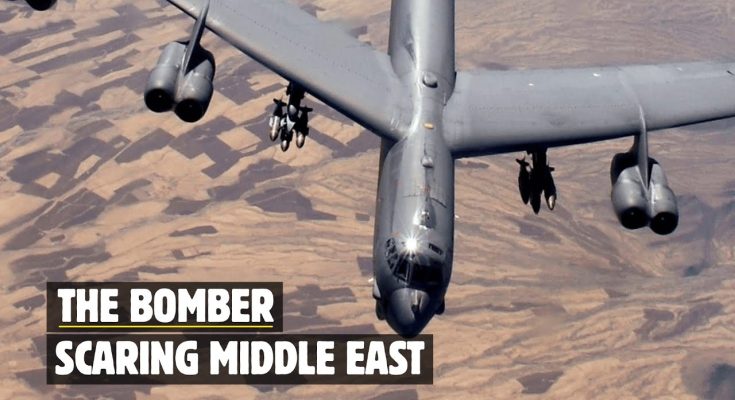Why the Middle East Knows the B-52 So Intimately
The B-52 Stratofortress, a long-range, subsonic strategic bomber, has been an iconic symbol of U.S. airpower since its introduction in the 1950s. With its distinctive humpbacked shape and eight-engine setup, the B-52 is synonymous with heavy bombing, but it is also one of the most versatile aircraft in the U.S. Air Force’s inventory. Over the years, the Middle East has become a frequent stage for the B-52’s power projection, making it a familiar presence in the region.
A Legacy of Deterrence and Power
The B-52’s relationship with the Middle East began during the Cold War when it was deployed for strategic deterrence in the face of global tensions. But it wasn’t until the 1990s Gulf War that the B-52 would make its mark in the region as a combat asset. The B-52H variant, the most advanced version in service today, was instrumental in delivering devastating airstrikes on enemy positions, dropping precision-guided munitions and conventional bombs in Operation Desert Storm.
Its long-range and massive payload capacity allowed the B-52 to carry out deep strike missions, delivering significant firepower from distances far beyond the reach of enemy air defenses. Even after Desert Storm, the B-52 remained a key player in U.S. operations in the region, including Operation Iraqi Freedom and Operation Enduring Freedom in Afghanistan.
Power Projection and Flexibility
One of the primary reasons the B-52 is so intimately tied to the Middle East is its ability to project power across vast distances. The B-52 can fly 8,800 miles unrefueled, with the ability to extend its reach even further through air-to-air refueling. This gives it a strategic advantage, allowing it to maintain a persistent presence over the region, whether in deterrence missions or during combat operations.
The B-52’s versatility also extends to its weaponry. Capable of carrying a wide range of munitions — from nuclear bombs to conventional precision-guided weapons — the B-52 can deliver a variety of payloads in support of different mission objectives. This flexibility makes it a valuable asset for responding to changing threats in the region, from high-value targets to terrorist strongholds.
Psychological Impact and Deterrence
The mere presence of the B-52 in the skies above the Middle East sends a powerful message. The B-52’s massive size, distinctive sound, and ability to carry such heavy payloads have made it a symbol of U.S. strength. When deployed to the region, the sight of a B-52 on patrol or conducting training missions can serve as a reminder to adversaries that the U.S. has the capacity to strike at any moment.
The B-52’s role in military deterrence is significant, particularly in the context of escalating tensions or unstable situations in the Middle East. The bomber is often used as a show of force to reassure allies and warn potential adversaries. When the U.S. Air Force announces B-52 deployments to the region, it underscores the message that American power is always ready and capable of responding swiftly.
A Continuing Presence
Even in the modern era, the B-52 remains a critical component of the U.S. military’s operations in the Middle East. As it continues to receive upgrades, including new engines and enhanced avionics, the B-52 is expected to serve for decades more. Whether conducting long-range bombing missions, providing air support for ground forces, or engaging in air policing operations, the B-52’s presence in the Middle East is a reminder that air dominance and global reach are central to American military power.
In a region known for its volatility and shifting alliances, the B-52’s ability to deliver overwhelming firepower while maintaining a long-term, global strike presence makes it an essential tool in projecting U.S. power and influence. The Middle East will continue to know the B-52 Stratofortress as a steadfast symbol of American military resolve for the foreseeable future.



